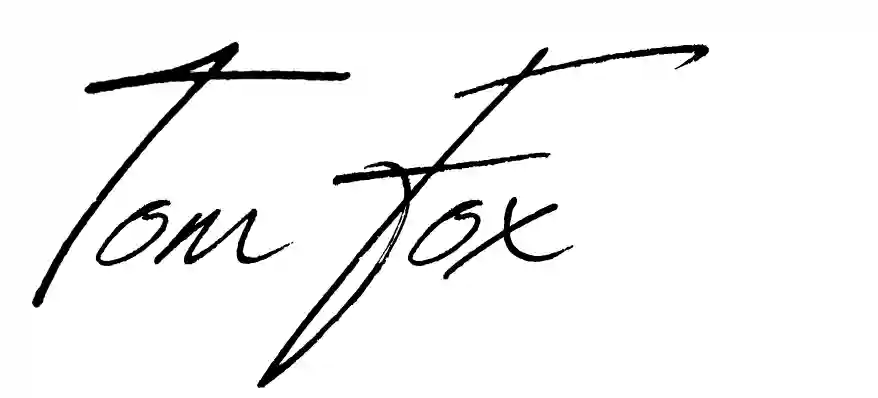Mastering the Art of the Micro-Obstacle: A Sales Strategy
Alright, you masters of desire, let’s talk about a brain trick that’s so sneaky, it’s almost like cheating (but don’t worry, it’s perfectly ethical).
It’s the “I Want It NOW!” effect, and it’s all about tapping into our innate desire for things that are hard to get, exclusive, and oh-so-desirable.
We’ve all experienced that burning desire for something that seems just out of reach.
Whether it’s a limited-edition sneaker, a sold-out concert ticket, or a coveted job offer, the harder it is to get, the more we seem to want it.
This is the psychology of scarcity and exclusivity in action, and as salespeople, we can leverage this powerful principle to create a sense of urgency and desire in our prospects.
Done with the endless sales theory and ready to actually close more deals? If you want to skip the ‘WHY’ and get straight to the ‘HOW’?
Make “Coffee with a Closer” your next move. Get weekly, battle-tested action steps delivered directly to your inbox – no fluff, just results.
The Thrill of the Chase: Why We Crave the Unattainable
Our brains are wired to value things that are rare, hard to obtain, or require effort.
This is rooted in our evolutionary past, where scarce resources were often essential for survival.
The ability to acquire those resources signaled status, competence, and increased chances of survival.
This primal drive still influences our behavior today.
When we perceive something as scarce or exclusive, it triggers a sense of urgency and desire.
We want it more, not necessarily because of its inherent value, but because of the challenge and the perceived status associated with obtaining it.
Let’s delve deeper into the psychological and evolutionary reasons behind our craving for the unattainable:
1. Reactance Theory:
Reactance theory suggests that when our freedom of choice is threatened or limited, we experience a psychological reactance, a motivational state aimed at restoring that freedom.
This explains why when something is scarce or exclusive, we tend to want it more.
The perceived restriction on our freedom to obtain it triggers a rebellious desire to overcome that restriction and assert our autonomy.
2. Loss Aversion:
Loss aversion is the tendency to feel the pain of a loss more strongly than the pleasure of an equivalent gain.
When something is scarce or exclusive, we perceive the potential loss of not obtaining it more strongly than the potential gain of acquiring it.
This fear of missing out (FOMO) can drive us to pursue it more vigorously.
3. The Endowment Effect:
The endowment effect is the tendency to value something more highly simply because we own it (or in this case, believe we could own it).
When something is scarce or exclusive, we imagine ourselves possessing it, and this imagined ownership increases its perceived value in our minds.
4. Social Signaling and Status:
Acquiring scarce or exclusive items can signal status, wealth, or social standing.
This social signaling can boost our self-esteem and enhance our perceived attractiveness to others.
In our evolutionary past, status and social standing were often linked to access to resources and mating opportunities.
This drive to acquire scarce items might be a remnant of this evolutionary pressure.
5. The “What-Might-Have-Been” Effect:
When something is scarce or unattainable, we tend to romanticize it and focus on its positive aspects, while downplaying any potential drawbacks.
This “what-might-have-been” effect can amplify our desire and make us more determined to obtain it.
6. Cognitive Dissonance Reduction:
When we invest significant effort or resources to obtain something, we tend to value it more highly to justify that investment.
This is related to cognitive dissonance reduction.
If we’ve worked hard to get something, we’re more likely to convince ourselves that it was worth the effort, even if it wasn’t objectively that valuable.
7. The Pleasure of the Pursuit:
Sometimes, the pursuit itself is more rewarding than the acquisition.
The challenge and excitement of overcoming obstacles and achieving a goal can trigger the release of dopamine, the “reward” neurotransmitter.
This can create a sense of satisfaction and accomplishment that reinforces the desire for the unattainable.
8. The Illusion of Control:
In a world where we often feel powerless, the pursuit of scarce or exclusive items can give us a sense of control and agency.
By overcoming challenges and achieving a goal, we assert our ability to influence our environment and achieve desired outcomes.
“It’s not about playing hard to get, it’s about playing smart to get. Master the art of desire and watch your sales skyrocket.”
Tom Fox
By understanding these psychological mechanisms, we can ethically leverage the “I Want It NOW!” effect to create a sense of urgency, exclusivity, and desire in our prospects.
It’s about understanding the primal drives that influence human behavior and using that knowledge to create more persuasive and engaging sales experiences.
Turning Obstacles into Opportunities: The Art of Micro-Obstacles
While you don’t want to make it unnecessarily difficult for your prospects to buy from you, strategically creating “micro-obstacles” can actually increase their desire and make your offer seem even more valuable.
Here’s how:
The “Busy Schedule” Gambit:
Don’t be too available.
Make them work a little to get your time.
This signals that your time is valuable and that you’re in demand. “I’m booked solid this week, but I might be able to squeeze you in for a quick call next Tuesday.”
The “Exclusive Access” Play:
Create a sense of exclusivity by making your product or service seem like it’s not for everyone.
This triggers the fear of missing out (FOMO) and makes people want to be part of the “in” group. “This is a limited-time offer, only available to our VIP clients.”
The “Challenge Accepted” Technique:
Give them a small challenge to overcome before they can access your offer.
This can be as simple as filling out a survey, attending a webinar, or completing a short quiz.
The effort they invest increases their perceived value of the offer.
The Two-Phase Sales Cycle: Building Desire and Closing the Deal
Think of your sales cycle as a two-act play:
Act 1: The Desire-Building Phase:
This is where you create those micro-obstacles, build anticipation, and make your prospects crave what you have to offer.
You’re generating excitement and highlighting the exclusivity and value of your product or service.
Act 2: The Frictionless Close:
Once you’ve built up enough desire, it’s time to make the closing process as smooth and effortless as possible.
Remove any unnecessary obstacles, provide clear and concise information, and make it easy for them to say “yes.”
Practical Examples of Building Desire:
Reschedule a meeting:
“Something came up, and I need to reschedule our meeting. How about next week?” This creates a sense of scarcity and implies that your time is valuable.
Make them wait (strategically):
“I’m running a few minutes behind. Can you please hold?” This can create a sense of anticipation and increase their desire to connect with you.
Create a waiting list:
“We’re currently at capacity, but we can add you to our waiting list.” This implies exclusivity and high demand.
Limited-time offers:
“This offer ends at midnight!” This creates a sense of urgency and encourages immediate action.
Ready to master the art of creating desire and urgency in your prospects? Sign up for the “Coffee with a Closer” and receive practical techniques to leverage scarcity, exclusivity, and “micro-obstacles” to make your offers irresistible.
The “I Want It NOW!” Effect: Your Secret Weapon
By mastering the art of desire, you can create a sense of urgency, exclusivity, and value that will make your prospects eager to buy from you.
It’s about understanding the psychology of scarcity and applying it ethically and strategically to influence their decision-making.
So, go out there and make them want it!
Just remember to balance building desire with providing a smooth and frictionless closing experience.

PS: Want the most powerful persuasion hacks delivered straight to your inbox? Sign up for the “Coffee with a Closer” today!


